Affiliate links on Android Authority may earn us a commission. Learn more.
MediaTek chip guide: All you need to know about MediaTek processors
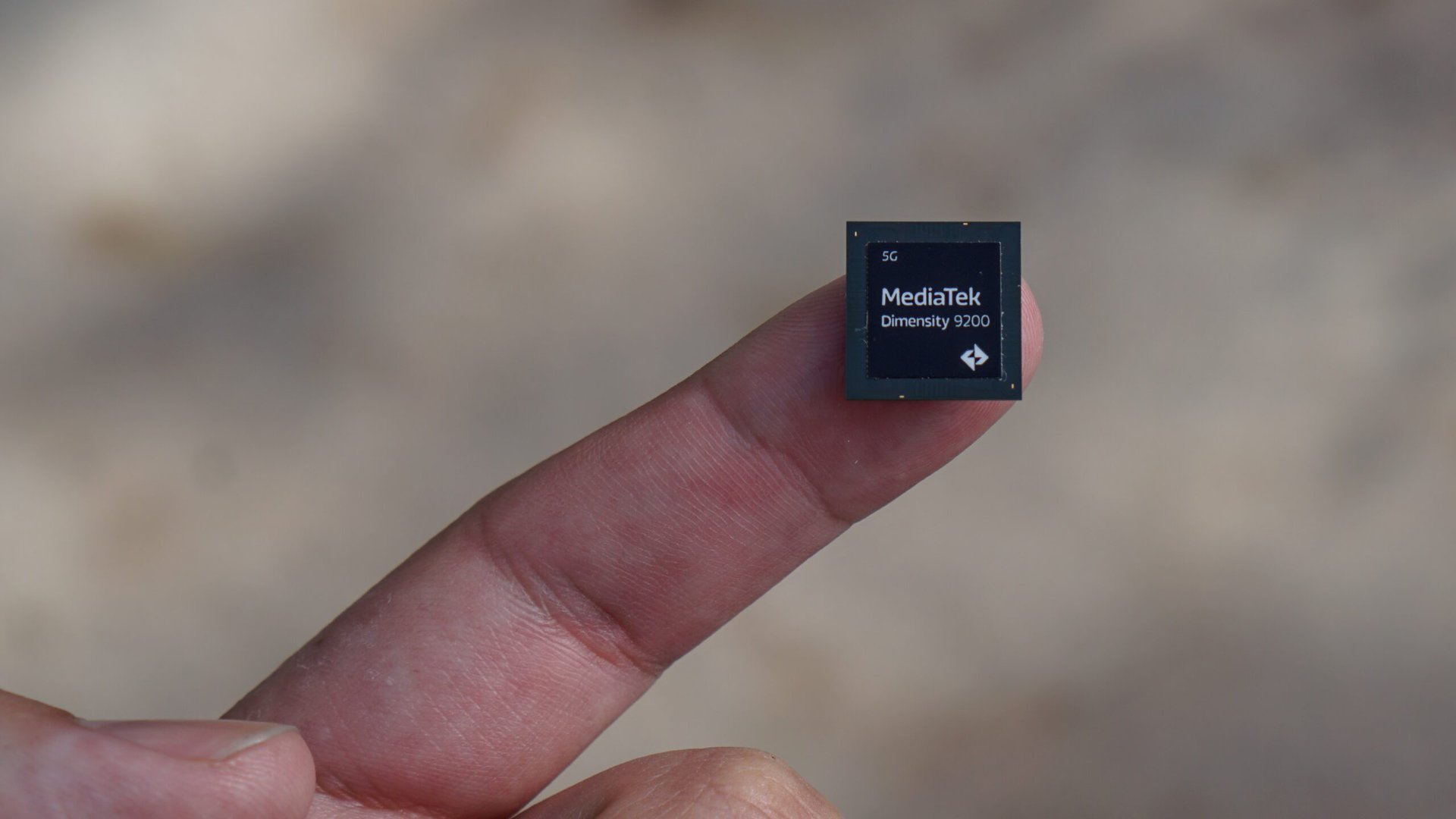
Taiwan-based MediaTek used to play second fiddle to silicon rival Qualcomm, but the company is now the number one chipmaker globally. And some of the Taiwenese company’s chips even feature on our list of the best mobile processors. Figuring out the naming conventions and capabilities of these MediaTek processors can be a little daunting, though.
Don’t fret, as our MediaTek chipset guide tries to break things down for you. Read on for all the information you’ll need on MediaTek processors.
Flagship MediaTek 5G chipsets: Dimensity 9 series
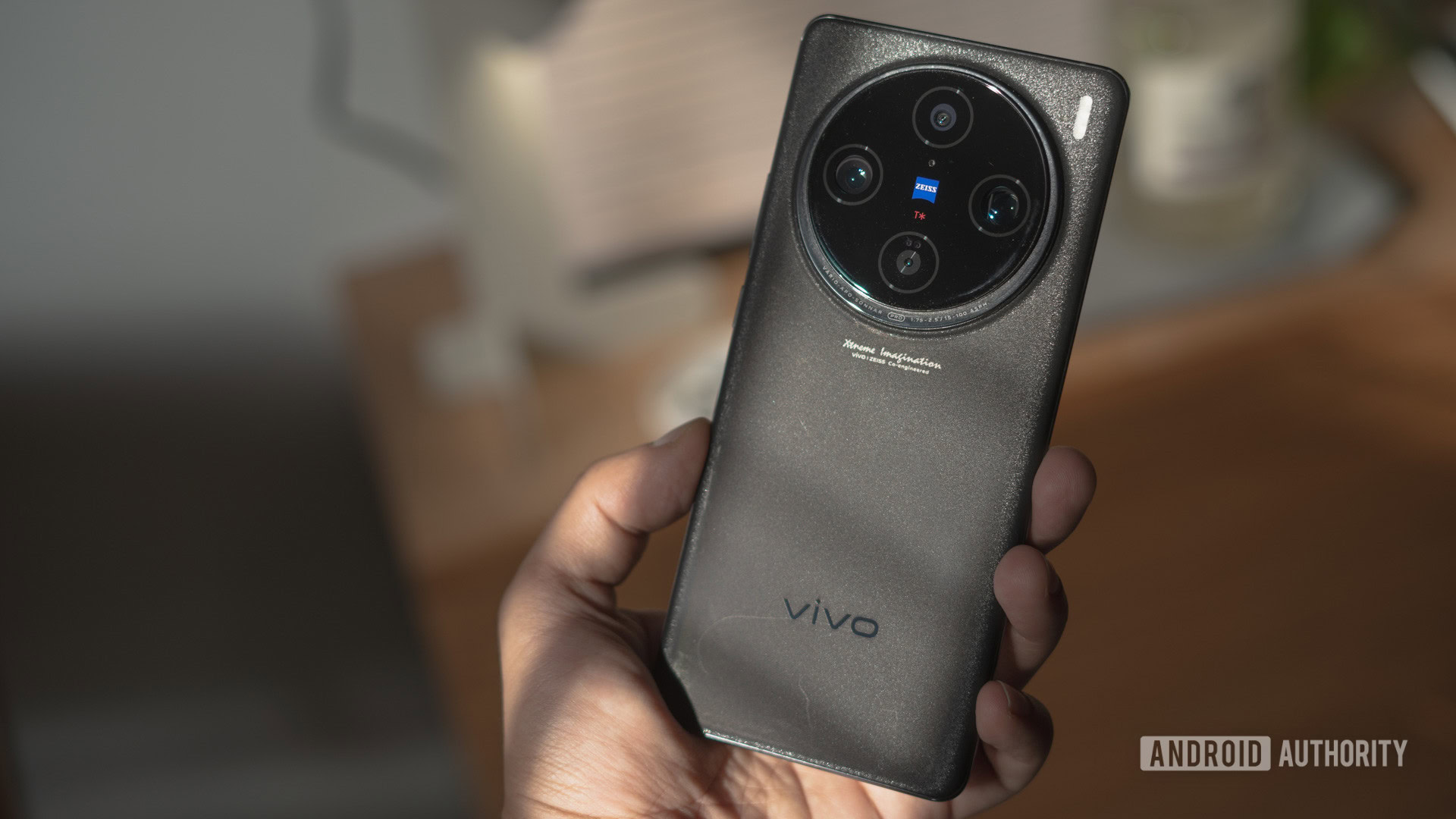
MediaTek’s newest flagship processors are the Dimensity 9300 and Dimensity 9300 Plus. These chips power several high-end phones in 2024 and are designed to take on the Snapdragon 8 Gen 3. It’s a 4nm TSMC design with a very powerful CPU cluster (four Cortex-X4 and four Cortext-A720 cores), and an impressive Mali-G720 Immortalis GPU. The latter supports hardware-based ray tracing, much like Qualcomm’s latest and greatest silicon.
Other noteworthy features include mmWave 5G for the first time in a flagship MediaTek chipset and refresh rate support topping out at 240Hz. We also get camera-related features like 8K recording, improved semantic image segmentation, and tech to reduce blurry photos.
The Dimensity 9300 can duke it out with the best Snapdragon chips Qualcomm has to offer.
The Dimensity 9300 series was preceded by the Dimensity 9200 and Dimensity 9200 Plus. These chips brought 4nm designs, a powerful octa-core CPU (1x Cortex-X3, 3x Cortex-A715, 4x Cortex-A510), and a capable Mali-G715 MC11 GPU. It was the first MediaTek flagship chip to offer support for features like mmWave 5G and hardware ray-tracing. The company’s high-end chipset for 2022 was the Dimensity 9000.
| Dimensity 9300 | Dimensity 9200 | |
|---|---|---|
CPU Config | Dimensity 9300 1x Cortex-X4 @ 3.25GHz 3x Cortex-X4 @ 2.85GHz 4x Cortex-A720 @ 2.0GHz | Dimensity 9200 1x Cortex-X3 @ 3.05GHz 3x Cortex-A715 @ 2.85GHz 4x Cortex-A510 1.8GHz |
GPU | Dimensity 9300 Arm Immortalis-G720 12-core Hardware ray-tracing | Dimensity 9200 Arm Immortalis-G715 11-core Hardware ray-tracing |
Caches | Dimensity 9300 8MB L3 10MB system-level cache | Dimensity 9200 8MB L3 6MB system-level cache |
AI | Dimensity 9300 APU 790 (added INT4 support and hardware compression) | Dimensity 9200 APU 690 |
RAM support | Dimensity 9300 LPDDR5T @ 9600Mbps | Dimensity 9200 LPDDR5X @ 8333Mbps |
Storage | Dimensity 9300 UFS 4.0 with MCQ | Dimensity 9200 UFS 4.0 with MCQ |
4G/5G Modem | Dimensity 9300 LTE/5G (integrated) Sub6GHz and mmWave 7,900Mbps down | Dimensity 9200 M80-based LTE/5G (integrated) Sub6GHz and mmWave 7,900Mbps down |
Other networking | Dimensity 9300 Bluetooth 5.X Wi-Fi 7 | Dimensity 9200 Bluetooth 5.3 Wi-Fi 7 Ready |
Process | Dimensity 9300 TSMC 4nm+ N4P | Dimensity 9200 TSMC 4nm N4P |
We haven’t seen many flagship phones with the Dimensity 9300 as Qualcomm’s flagship processors still rule the roost in the global premium space. That said, you can still find a handful of high-end phones sporting the chip in global markets.
Notable flagship phones:
- Vivo X100 Pro
- OPPO Find X7
- OPPO Find X6
- iQOO Neo 8 Pro
Mid-range MediaTek 5G chipsets
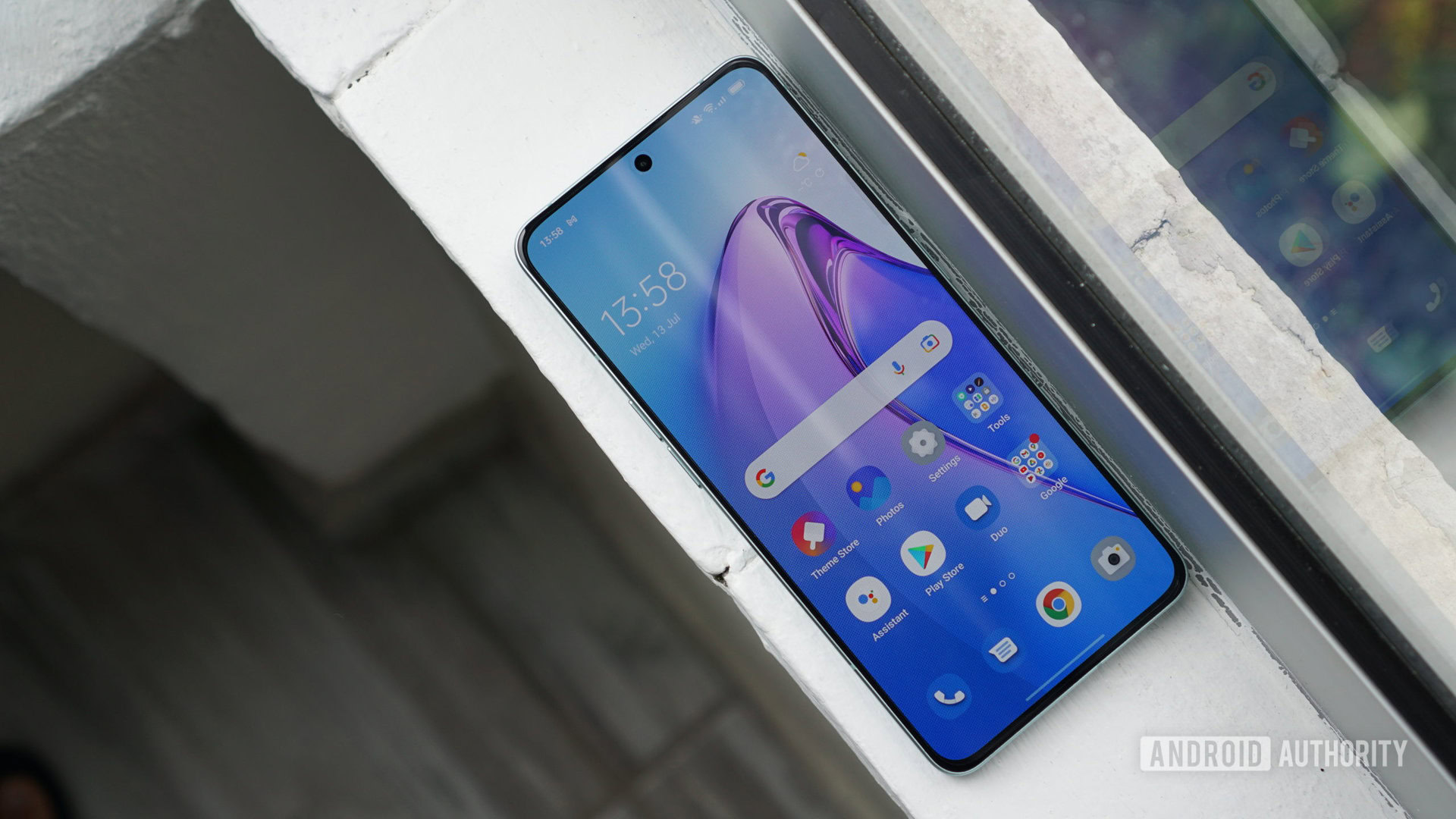
The latest and greatest mid-range processor from MediaTek is the Dimensity 8300, announced in November 2023. And it’s effectively an upgrade over the Dimensity 8200. It sports 1x Cortex-A715 @ 3.35GHz, 3x Cortex-A715 @ 3GHz, and 4x Cortex-A510 2.2GHz cores. That’s roughly 20% more performant in CPU tasks. It gets even better in GPU workloads, where the Dimensity 8300’s Mali-G615 MC6 GPU offers 60% better performance than its predecessor.
The chip also supports generative AI features, including the ability to run large language models (LLMs) and image generators entirely on device. However, it’s up to device manufacturers to incorporate these features in software.
| Dimensity 8300 | |
|---|---|
CPU Config | 1x Cortex-A715 @ 3.35GHz 3x Cortex-A715 @ 3GHz 4x Cortex-A510 2.2GHz |
GPU | Arm Mali-G615 6-core |
Caches | 4MB L3 4MB system-level cache |
AI | APU 780 Up to 10bn parameter LLMs Stable Diffusion image generation |
RAM support | LPDDR5X @ 8533Mbps |
Storage | UFS 4.0 with MCQ |
4G/5G Modem | LTE/5G (integrated) Sub-6GHz 5.17Gbps down |
Other networking | Bluetooth 5.4 Wi-Fi 6E |
Process | TSMC 4nm |
Moving down a notch, MediaTek also has the Dimensity 8200, 8050, and 8020 on offer. You should still get plenty of power if you buy a phone with these chips.
Notable phones:
- POCO X6 Pro
- OPPO Reno11 Pro
- vivo V30 Pro
- Xiaomi 13T Pro
Budget MediaTek chipsets
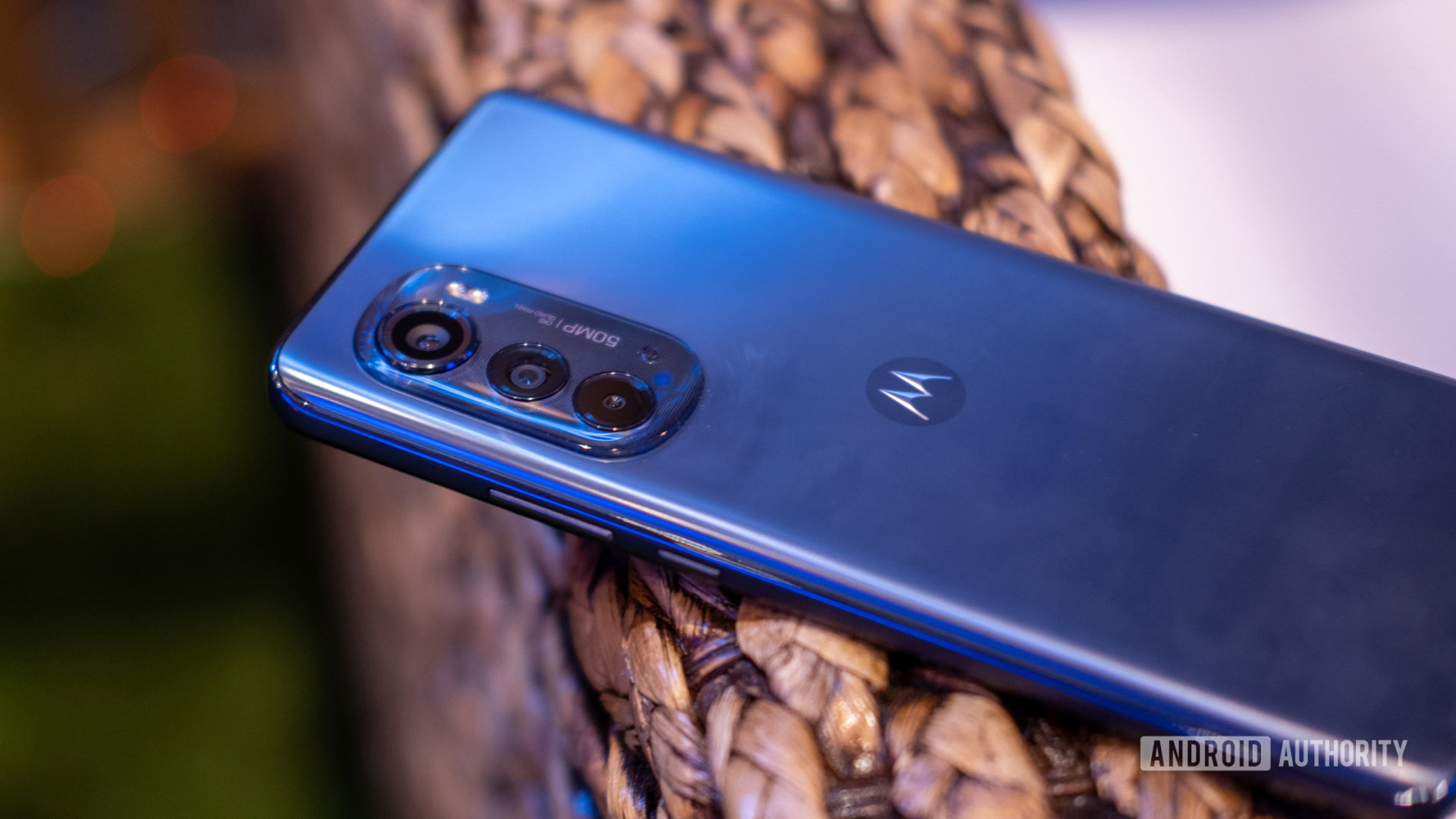
MediaTek also offers a host of more budget-focused 5G chipsets, and they all have middling CPUs (two big and six little cores) and mid-tier graphics. The Dimensity 7200 is currently the best of the lot, though. This processor packs a super-tiny 4nm design, new CPU cores (two Cortex-A715 and six Cortex-A510), and Mali-G610 MC4 graphics. Other notable features include 200MP single camera support, 4K HDR video support, Bluetooth 5.3, Wi-Fi 6E, and a fifth-generation APU.
MediaTek is rejigging its mid-range chips, with Dimensity 6000 and 7000 series processors now being a thing.
The Dimensity 7050 and 7020 are next on the totem pole, featuring an octa-core CPU (2x Cortex-A78 and 6x Cortex-A55), respectable Mali-G68 MC4 graphics, and a 6nm design. The chip also brings a third-generation APU, 120Hz refresh rate, 4K HDR recording, and 200MP single camera support.
Perhaps the most important release in this tier was 2022’s Dimensity 1050, as it was the company’s first processor with mmWave 5G support. This chipset shares some of the same features as the Dimensity 7050, but brings a different GPU (Mali-G610 MC3) and downgrades the maximum camera resolution (108MP). However, the processor also brings upgraded Wi-Fi (Wi-Fi 6E versus 6), what appears to be an upgraded APU, and dual HDR video capabilities.
| MediaTek Dimensity 7200 | MediaTek Dimensity 1050 | MediaTek Dimensity 7050/7020 | MediaTek Dimensity 6080 | MediaTek Dimensity 6020 | |
|---|---|---|---|---|---|
CPU | MediaTek Dimensity 7200 2x Cortex-A715 6x Cortex-A510 | MediaTek Dimensity 1050 2x Cortex-A78 6x Cortex-A55 | MediaTek Dimensity 7050/7020 2x Cortex-A78 6x Cortex-A55 | MediaTek Dimensity 6080 2x Cortex-A76 6x Cortex-A55 | MediaTek Dimensity 6020 2x Cortex-A76 6x Cortex-A55 |
GPU | MediaTek Dimensity 7200 Mali-G610 MC4 | MediaTek Dimensity 1050 Mali-G610 MC3 | MediaTek Dimensity 7050/7020 Mali-G68 MC4 | MediaTek Dimensity 6080 Mali-G57 MC2 | MediaTek Dimensity 6020 Mali-G57 MC2 |
Modem | MediaTek Dimensity 7200 Sub-6GHz 4.7Gbps | MediaTek Dimensity 1050 Sub-6GHz mmWave 4.6Gbps | MediaTek Dimensity 7050/7020 Sub-6GHz | MediaTek Dimensity 6080 Sub-6GHz 2.77Gbps downlink | MediaTek Dimensity 6020 Sub-6GHz 2.77Gbps downlink |
Camera | MediaTek Dimensity 7200 200MP single | MediaTek Dimensity 1050 108MP single 20MP+20MP dual | MediaTek Dimensity 7050/7020 200MP single Dual TBC | MediaTek Dimensity 6080 108MP single 16MP+16MP dual | MediaTek Dimensity 6020 64MP single 16MP+16MP dual |
Machine learning | MediaTek Dimensity 7200 APU 650 | MediaTek Dimensity 1050 APU 550 | MediaTek Dimensity 7050/7020 APU 550 | MediaTek Dimensity 6080 TBC | MediaTek Dimensity 6020 TBC |
Process | MediaTek Dimensity 7200 4nm | MediaTek Dimensity 1050 6nm | MediaTek Dimensity 7050/7020 6nm | MediaTek Dimensity 6080 6nm | MediaTek Dimensity 6020 7nm |
Two other recent releases are the Dimensity 6020 and 6080. These processors share features like the CPU (2x Cortex-A76 and 6x Cortex-A55), a Mali-G57 MC2 GPU, a sub-6GHz modem topping out at 2.77Gbps, and aging Wi-Fi 5 support. It also seems like these chips lack an APU for faster, more robust machine learning. The Dimensity 6080 differs from the 6020 by offering a smaller manufacturing process (6nm versus 7nm) and higher resolution camera support (108MP versus 64MP).
MediaTek also has a host of older budget 5G silicon in its portfolio that are more popular than the above-mentioned processors right now.
| MediaTek Dimensity 920/900 | MediaTek Dimensity 720 | MediaTek Dimensity 700 | |
|---|---|---|---|
CPU | MediaTek Dimensity 920/900 2x Cortex-A78 6x Cortex-A55 | MediaTek Dimensity 720 2x Cortex-A76 6x Cortex-A55 | MediaTek Dimensity 700 2x Cortex-A76 6x Cortex-A55 |
GPU | MediaTek Dimensity 920/900 Arm Mali-G68 MC4 | MediaTek Dimensity 720 Arm Mali-G57 MC3 | MediaTek Dimensity 700 Arm Mali-G57 MC2 |
Modem | MediaTek Dimensity 920/900 2.7Gbps download Sub-6Ghz | MediaTek Dimensity 720 2.77Gbps download Sub-6Ghz | MediaTek Dimensity 700 2.77Gbps download Sub-6Ghz |
Camera | MediaTek Dimensity 920/900 108MP single 20MP+20MP dual | MediaTek Dimensity 720 64MP single 20MP+16MP dual | MediaTek Dimensity 700 64MP single 16MP+16MP dual |
Machine learning | MediaTek Dimensity 920/900 APU 3.0 | MediaTek Dimensity 720 APU | MediaTek Dimensity 700 N/A |
Process | MediaTek Dimensity 920/900 6nm | MediaTek Dimensity 720 7nm | MediaTek Dimensity 700 7nm |
These older chips (such as the Dimensity 700, Dimensity 900, and Dimensity 920) typically offer 2+6 core CPU layouts, older mid-tier Arm GPUs, 5G+5G dual-SIM support, and top out at 4K video recording at best.
Notable phones:
MediaTek’s 4G chips
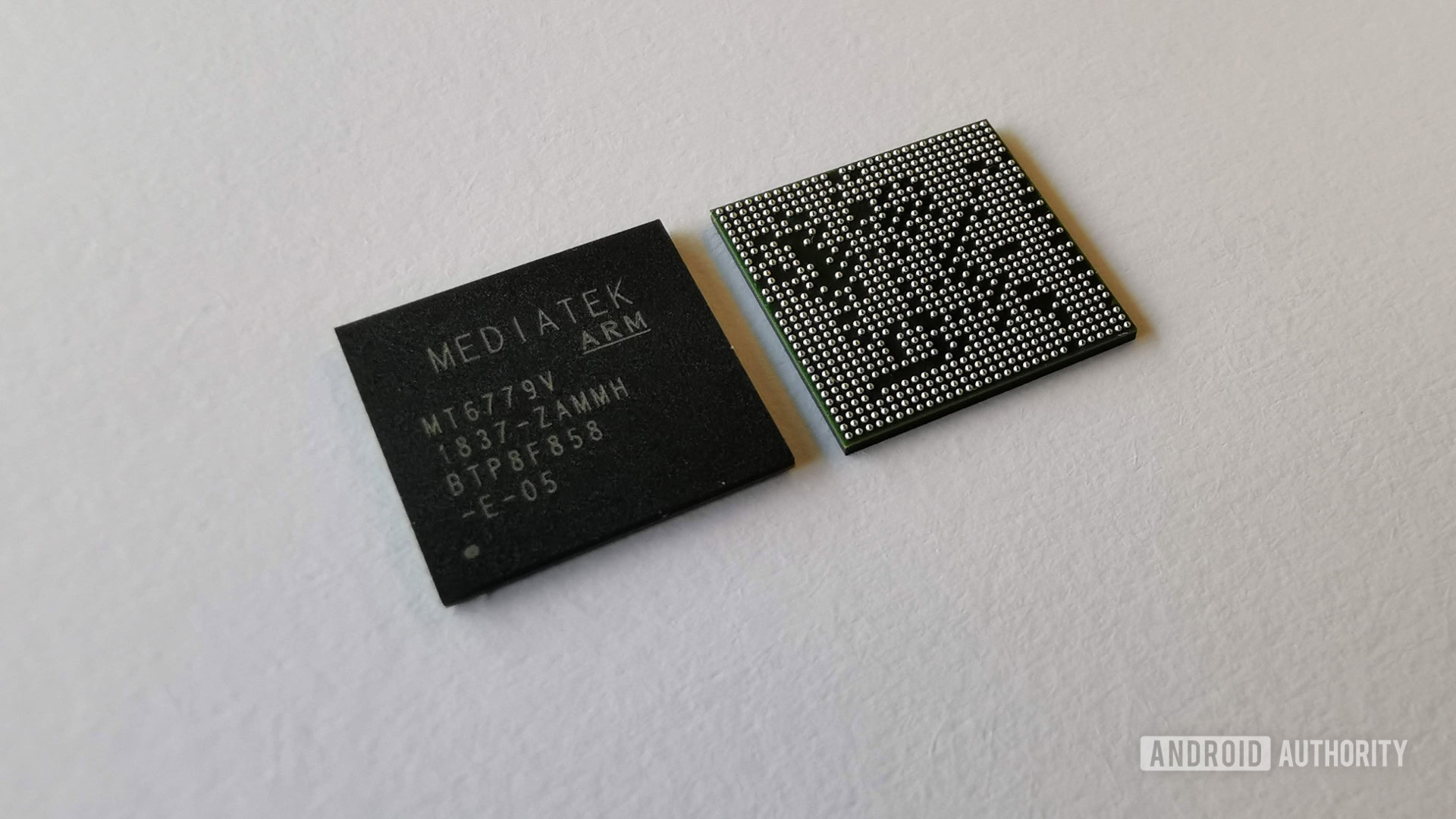
The company still offers 4G chipsets. The most capable chipsets here are the Helio G9x range, Helio G8x series, and Helio G70. Expect 2+6 core CPU setups here, as well as modest graphical performance. The Helio G99 in particular stands out thanks to the small 6nm design for improved efficiency. By comparison, many of these low-end 4G chips are older 12nm designs.
These Helio G series chips often power 4G variants of smartphones from the likes of Samsung, Xiaomi, and other brands. For example, the Galaxy A14 4G and A24 4G are powered by Helio G9x processors.
| MediaTek Helio G99 | MediaTek Helio G96 | MediaTek Helio G95 | |
|---|---|---|---|
CPU | MediaTek Helio G99 2x Cortex-A76 6x Cortex-A55 | MediaTek Helio G96 2x Cortex-A76 6x Cortex-A55 | MediaTek Helio G95 2x Cortex-A76 6x Cortex-A55 |
GPU | MediaTek Helio G99 Mali-G57 MC2 | MediaTek Helio G96 Mali-G57 MC2 | MediaTek Helio G95 Mali-G76 MC4 |
AI | MediaTek Helio G99 N/A | MediaTek Helio G96 N/A | MediaTek Helio G95 APU 2.0 |
Camera | MediaTek Helio G99 108MP single 16MP+16MP dual | MediaTek Helio G96 108MP single 16MP+16MP dual | MediaTek Helio G95 64MP single 24MP+16MP dual |
Connectivity | MediaTek Helio G99 Cat-13 LTE | MediaTek Helio G96 Cat-13 LTE | MediaTek Helio G95 Cat-12 LTE |
Manufacturing process | MediaTek Helio G99 6nm | MediaTek Helio G96 12nm | MediaTek Helio G95 12nm |
Believe it or not, but there are less impressive 4G MediaTek chips. The company still offers absolutely ancient Helio G35, G25, and A25 processors. These are octacore chips with no big cores whatsoever, while also packing low-end PowerVR GPUs, and 12nm designs. So you might not get consistently smooth system and app performance here, never mind playing demanding games.
Don’t expect to see many if any new Helio 4G chips in the coming years as the industry fully switches over to 5G. But they’ll still do the basics just fine if you’re on a strict budget.
Notable phones:
- Motorola Moto G72
- Redmi Note 11 Pro 4G
- Samsung Galaxy A14 4G
- Samsung Galaxy A24 4G
That’s about it for our MediaTek chipset guide! We’ll be updating this article periodically to add new chipsets from the Taiwanese silicon designer.